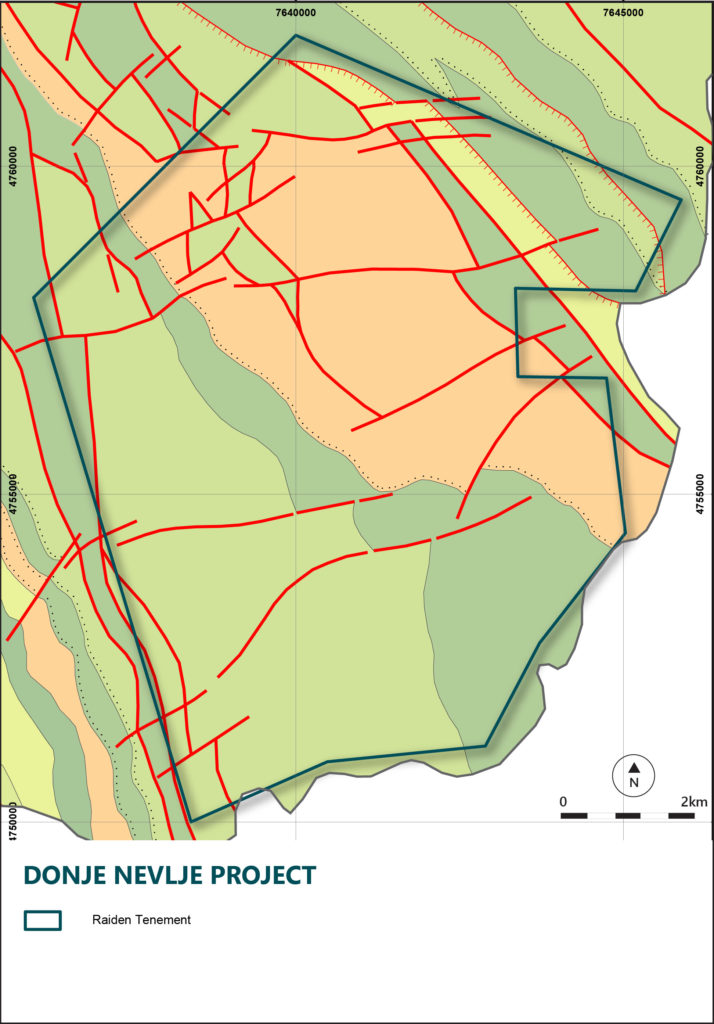Project highlights
Dominated by Cretaceous age volcano sedimentary sequences which are analogous to the geology within the Timok Magmatic Complex, which is a world class copper-gold district located along the same structural trend
Government agencies have defined zones of anomalism consistent with porphyry style mineralisation
Well-developed infrastructure with rail, water and power available within the license area
Ownership
100% Raiden Resources
Status
License granted
Permit Size
74Km2
Targets
Porphyry / Epithermal and Skarn mineralisation
Rio Tinto Joint Venture Agreement
In March 2018, the company announced that it had entered into a Joint Venture Agreement wiht Rio Tinto Mining and Exploration limited with respect to the Donje Nevlje project. For further information please refer to Raiden Resources’ press release.
The Donje Nevlje project is located in the southeast of Serbia, with the Donje Nevlje project bounded by the administrative border with Bulgaria.
Dimitrovgrad is the nearest town to Donje Nevlje project area, and it is about 360km from Belgrade by highway to Nis and main road to Dimitrovgrad. From Dimitrovgrad there are several small roads and forest tracks, into the project area, all of which can be readily negotiated with a 4-wheel drive vehicle. The main railway line from Serbia to Bulgaria (Nis to Sofia) passes through Dimitrovgrad, and is served by passenger as well as freight trains.

Donje Nevlje Geology
The geology of the Donje Nevlje licence represents the southern extension of the Bor Metallogenic Zone and comprises similar Cretaceous volcanic and sub-volcanic lithologies, with younger Cretaceous clastic sedimentary rocks and limestones. The Donje Nevlje project is approximately 125km southeast of the productive Timok Magmatic Complex, which is host to the Bor and Majdanpek districts of copper-gold mineralization.

Geological mapping and exploration in the 1960’s confirmed the compatibility of the stratigraphy and lithologies, primarily andesite volcanics and pyroclastics of Upper Cretaceous age, with those of the Timok Magmatic Complex The project was therefore considered perspective for porphyry, epithermal, and skarn copper-gold mineralization (Csongradi, 2012).
